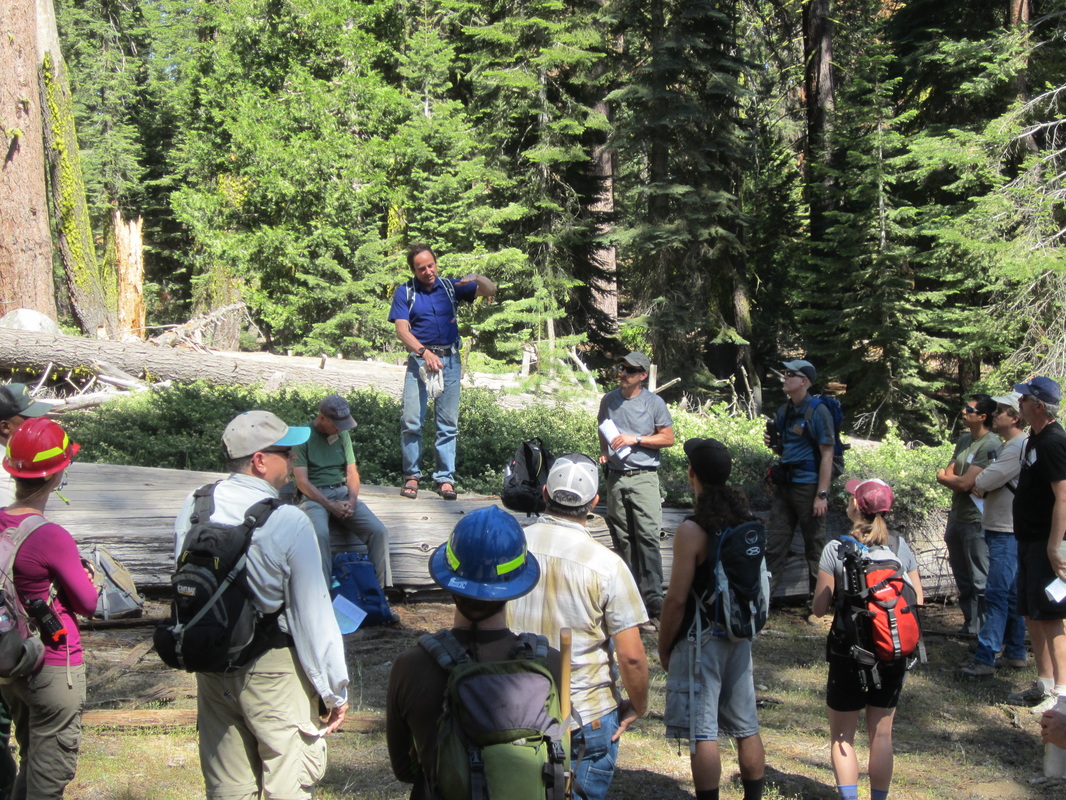|
We just wrapped up the kick-off to the 2016 field season at the Teakettle Experimental Forest. As part of the trip, we took a group of folks from the Sierra Nevada Conservancy, California Air Resources Board, CAL FIRE, and California EPA on a tour of the experimental treatments at Teakettle to talk about the role of forests in mitigating climate change and the risks posed by wildfire and drought-induced mortality. The trip was successful in large part to the logistical support provided by the California Conservation Corps. A big thanks to the CCC! Malcolm North provided a history of the experimental forest and the Teakettle Experiment which includes three levels of thinning and two levels of prescribed burning. We had great conversations about the historic frequency of fire in this mixed-conifer forest. Our site-specific fire history suggests that fires burned on average every 15 years and that the last widespread surface fire was in 1865. Harold Zald shared his dendro expertise and explained to the group how tree rings provide an integrated measure of climate and local influences on growth and the process by which trees are scarred by fire. Moving on up through the experimental forest, Malcolm explained the role of soils and depth to bedrock and how these factors influence forest density and tree growth. We spent some time discussing how large trees sequester and store considerably more C than small trees. This large (157.1 cm DBH) sugar pine stores 88.1 metric tons of carbon. Klaus Scott from the ARB shared with us some recent analyses of wildfire emissions from large fires in California. It was a great experience to be out in the forest talking science with such a well-informed group of people. A huge thanks to the Sierra Nevada Conservancy for organizing the trip. Stay tuned for some aerial video of the magnificent forest at Teakettle.
0 Comments
Your comment will be posted after it is approved.
Leave a Reply. |
Details
Archives
October 2023
Categories
All
|







 RSS Feed
RSS Feed